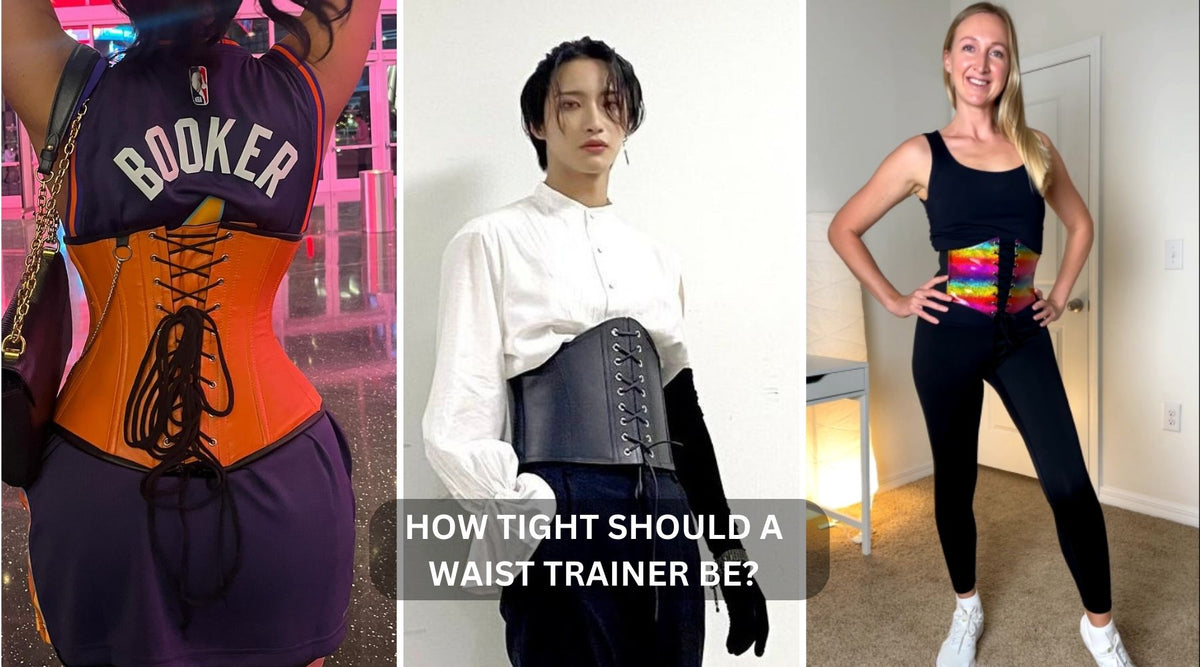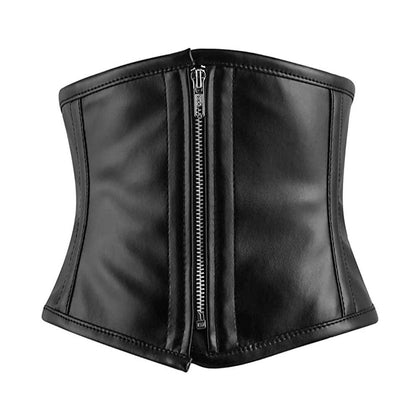

Looking to achieve that hourglass figure? A waist trainer helps you to achieve your dream figure. But how tight should a waist trainer be for the best results?
Finding the perfect fit for your waist trainer is essential to getting the most out of it. While you might be tempted to go for the tightest option available, that may not be the most effective strategy.
Wearing a waist trainer that is too tight can be uncomfortable, restrict your breathing, and may even lead to health complications.
On the other hand, wearing a waist trainer that is too loose won't provide the necessary compression to shape your waist properly.
How tight should a waist trainer be?
When it comes to waist trainers, the right tightness level will vary from person to person. It depends on factors such as body shape, goals, and personal comfort. It's important to remember that a waist trainer should never cause pain or discomfort.
So, how do I know if my waist trainer is tight enough?
Firstly, consider your comfort level. A waist trainer should fit snugly, but not to the point where it becomes unbearable. You should still be able to move and breathe comfortably while wearing it. If you feel any pain or experience difficulty breathing, it's a sign that the waist trainer is too tight.
Secondly, think about your goals. If you're looking for a more dramatic waist reduction, you may opt for a slightly tighter waist trainer. However, keep in mind that this should still be within a comfortable range. It's important to prioritize your health and safety over achieving extreme results.
Lastly, consider your body shape. Different body shapes require different levels of compression.
For example, if you have a longer torso, you may need a waist trainer with more coverage to provide the desired shaping effect. Understanding your body shape will help you choose the right tightness level for your waist trainer.

How to measure for a waist trainer?
Before purchasing a waist trainer, it's crucial to measure your waist correctly. This will ensure that you choose the right size and achieve the desired fit. Here's a step-by-step guide on how to measure for a waist trainer:
- Start by standing up straight and relaxed.
- Use a measuring tape and wrap it around your natural waist, which is the narrowest part of your torso.
- Make sure the measuring tape is snug but not too tight. It should be parallel to the ground and not digging into your skin.
- Take note of the measurement in inches or centimeters.
Once you have your waist measurement, refer to our corset sizing chart. Remember that it's better to choose a waist trainer size based on your waist measurement rather than your clothing size.
Further Readings
→ Are Corsets Bad for Your Health? - Experts Advice
→ How to buy a corset: Tips and Tricks for First-Time Buyers
Signs of a waist trainer that is too loose
While it's important to avoid wearing a waist trainer that is too tight, wearing one that is too loose won't provide the desired results either.
Here are some signs that your waist trainer may be too loose:
It doesn't provide enough compression: A waist trainer should give you a noticeable cinching effect, helping to shape and define your waistline. If it feels loose and doesn't provide sufficient compression, it may be time to consider a smaller size.
It rides up or slides down: A well-fitting waist trainer should stay in place throughout the day. If you find that your waist trainer constantly rides up or slides down, it's a sign that it is too loose. This can result in an uneven shaping effect and make the waist trainer less effective.
It feels comfortable immediately: While comfort is important, a waist trainer that feels comfortable right away may be too loose. It should take some time for your body to adjust to the compression. If there is no initial discomfort, it's an indication that the waist trainer is not providing enough compression.
Remember, finding the right balance between comfort and compression is crucial for optimal waist trainer fit and results.
Finding the right waist trainer for your body type

Just like clothing, not all waist trainers are created equal. Different body types require different features and styles to achieve the desired results.
Here are some tips for finding the right waist trainer for your body type:
1. Hourglass body type: If you already have an hourglass shape and want to enhance it further, look for a waist trainer with a more pronounced curve. This will help accentuate your waistline and create a more defined hourglass figure.
2. Apple body type: If you carry most of your weight around your midsection, choose a waist trainer with a higher coverage. This will help target the excess fat around your waist and provide a smoother silhouette.
3. Pear body type: For those with a pear-shaped body, focus on waist trainers that provide more compression in the lower abdomen area. This will help flatten and shape your lower belly, creating a more balanced look.
4. Athletic body type: If you have a more athletic build, consider a waist trainer with adjustable straps or hooks. This will allow you to customize the fit and compression level based on your specific needs.
5. Ruler body type: The ruler body type, or straight body, is characterized by a balanced shape with minimal curves—bust, waist, and hips have similar measurements, creating a rectangular silhouette.
Remember to always prioritize comfort and safety when choosing a waist trainer. It's essential to find a style that suits your body type and provides the desired level of compression without causing discomfort or restriction.
If you want to buy Best Waist for beginners, We offer 15% Discount to Our new Customers as a welcome Thanks.
where can i get fitted for a corset?
At Miss Leather, we're all about giving you a best corset fitting experience. Our team knows their stuff when it comes to creating corsets that not only fit like a dream but also look amazing.
We're not just about style; we make sure your corset is tailored to your body and feels comfy too. We use smart compression techniques to support your posture and enhance those natural curves.
Wondering where to get fitted for a corset?
Easy – head to Miss Leather! We've got your back (and front!), making sure you not only look fantastic but also feel great in our corsets. Your confidence boost is just a fitting away!
Final Words: How Tight Should A Waist Trainer Be?
Achieving the perfect waist trainer fit is a balance between comfort, compression, and personal goals. It's important to remember that a waist trainer should never cause pain or restrict your breathing.
Finding the right tightness level is crucial for getting the most out of your waist trainer.
Remember, the journey to a slimmer waist should prioritize your comfort and safety.
Find the perfect fit, wear your waist trainer with confidence, and embrace the transformation.



